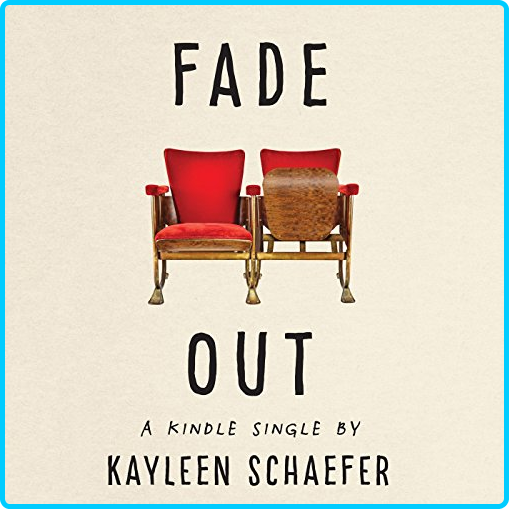Eating to Extinction The World's Rarest Foods and Why We Need to Save Them [Audiobook]

A captivating and unexpected journey through the history of humankind's relationship with food, with an urgent message for our times. We live in an age of mass extinction. The earth's biodiversity is decreasing at a faster rate than ever. Industrial agriculture and the standardisation of taste are not only wiping out many edible plants but also the food cultures, histories and livelihoods that go with them. Inspired by a global project to collect and preserve foods that are at risk of extinction, Dan Saladino sets out to encounter these endangered foods.
Each food tells a story - some of them moving and personal, some of them urgent and timely - and collectively they span the history of civilisation and touch on many of the biggest issues of our time, from climate change to global inequality. From a humble pea found on an island on the south coast of America, to a mysterious cheese found in the mountains of the Balkans; from the wild honey eaten for centuries by the nomadic tribes of Tanzania, to a rare citrus fruit in the mountain forests of India that is the genetic ancestor of all the world's oranges, each ingredient transports us to a different time and place. Spanning the globe in his search for the most endangered foods, Dan Saladino takes us on a thrilling tour of a disappearing world, and reveals the battles being fought for the future of the planet.
A New York Times Book Review Editors' Choice
What Saladino finds in his adventures are people with soul-deep relationships to their food. This is not the decadence or the preciousness we might associate with a word like "foodie," but a form of reverence . . . Enchanting." -Molly Young, The New York Times
Dan Saladino's Eating to Extinction is the prominent broadcaster's pathbreaking tour of the world's vanishing foods and his argument for why they matter now more than ever
Over the past several decades, globalization has homogenized what we eat, and done so ruthlessly. The numbers are stark: Of the roughly six thousand different plants once consumed by human beings, only nine remain major staples today. Just three of these-rice, wheat, and corn-now provide fifty percent of all our calories. Dig deeper and the trends are more worrisome still:
The source of much of the world's food-seeds-is mostly in the control of just four corporations. Ninety-five percent of milk consumed in the United States comes from a single breed of cow. Half of all the world's cheese is made with bacteria or enzymes made by one company. And one in four beers drunk around the world is the product of one brewer.
If it strikes you that everything is starting to taste the same wherever you are in the world, you're by no means alone. This matters: when we lose diversity and foods become endangered, we not only risk the loss of traditional foodways, but also of flavors, smells, and textures that may never be experienced again. And the consolidation of our food has other steep costs, including a lack of resilience in the face of climate change, pests, and parasites. Our food monoculture is a threat to our health-and to the planet.
In Eating to Extinction, the distinguished BBC food journalist Dan Saladino travels the world to experience and document our most at-risk foods before it's too late. He tells the fascinating stories of the people who continue to cultivate, forage, hunt, cook, and consume what the rest of us have forgotten or didn't even know existed. Take honey-not the familiar product sold in plastic bottles, but the wild honey gathered by the Hadza people of East Africa, whose diet consists of eight hundred different plants and animals and who communicate with birds in order to locate bees' nests. Or consider murnong-once the staple food of Aboriginal Australians, this small root vegetable with the sweet taste of coconut is undergoing a revival after nearly being driven to extinction. And in Sierra Leone, there are just a few surviving stenophylla trees, a plant species now considered crucial to the future of coffee.
From an Indigenous American chef refining precolonial recipes to farmers tending Geechee red peas on the Sea Islands of Georgia, the individuals profiled in Eating to Extinction are essential guides to treasured foods that have endured in the face of rampant sameness and standardization. They also provide a roadmap to a food system that is healthier, more robust, and, above all, richer in flavor and meaning.


English | ASIN: B08WC6H9ZY | 2021 | 16 hours and 14 minutes | [email protected] kbps | 256 MB
A captivating and unexpected journey through the history of humankind's relationship with food, with an urgent message for our times. We live in an age of mass extinction. The earth's biodiversity is decreasing at a faster rate than ever. Industrial agriculture and the standardisation of taste are not only wiping out many edible plants but also the food cultures, histories and livelihoods that go with them. Inspired by a global project to collect and preserve foods that are at risk of extinction, Dan Saladino sets out to encounter these endangered foods.
Each food tells a story - some of them moving and personal, some of them urgent and timely - and collectively they span the history of civilisation and touch on many of the biggest issues of our time, from climate change to global inequality. From a humble pea found on an island on the south coast of America, to a mysterious cheese found in the mountains of the Balkans; from the wild honey eaten for centuries by the nomadic tribes of Tanzania, to a rare citrus fruit in the mountain forests of India that is the genetic ancestor of all the world's oranges, each ingredient transports us to a different time and place. Spanning the globe in his search for the most endangered foods, Dan Saladino takes us on a thrilling tour of a disappearing world, and reveals the battles being fought for the future of the planet.
A New York Times Book Review Editors' Choice
What Saladino finds in his adventures are people with soul-deep relationships to their food. This is not the decadence or the preciousness we might associate with a word like "foodie," but a form of reverence . . . Enchanting." -Molly Young, The New York Times
Dan Saladino's Eating to Extinction is the prominent broadcaster's pathbreaking tour of the world's vanishing foods and his argument for why they matter now more than ever
Over the past several decades, globalization has homogenized what we eat, and done so ruthlessly. The numbers are stark: Of the roughly six thousand different plants once consumed by human beings, only nine remain major staples today. Just three of these-rice, wheat, and corn-now provide fifty percent of all our calories. Dig deeper and the trends are more worrisome still:
The source of much of the world's food-seeds-is mostly in the control of just four corporations. Ninety-five percent of milk consumed in the United States comes from a single breed of cow. Half of all the world's cheese is made with bacteria or enzymes made by one company. And one in four beers drunk around the world is the product of one brewer.
If it strikes you that everything is starting to taste the same wherever you are in the world, you're by no means alone. This matters: when we lose diversity and foods become endangered, we not only risk the loss of traditional foodways, but also of flavors, smells, and textures that may never be experienced again. And the consolidation of our food has other steep costs, including a lack of resilience in the face of climate change, pests, and parasites. Our food monoculture is a threat to our health-and to the planet.
In Eating to Extinction, the distinguished BBC food journalist Dan Saladino travels the world to experience and document our most at-risk foods before it's too late. He tells the fascinating stories of the people who continue to cultivate, forage, hunt, cook, and consume what the rest of us have forgotten or didn't even know existed. Take honey-not the familiar product sold in plastic bottles, but the wild honey gathered by the Hadza people of East Africa, whose diet consists of eight hundred different plants and animals and who communicate with birds in order to locate bees' nests. Or consider murnong-once the staple food of Aboriginal Australians, this small root vegetable with the sweet taste of coconut is undergoing a revival after nearly being driven to extinction. And in Sierra Leone, there are just a few surviving stenophylla trees, a plant species now considered crucial to the future of coffee.
From an Indigenous American chef refining precolonial recipes to farmers tending Geechee red peas on the Sea Islands of Georgia, the individuals profiled in Eating to Extinction are essential guides to treasured foods that have endured in the face of rampant sameness and standardization. They also provide a roadmap to a food system that is healthier, more robust, and, above all, richer in flavor and meaning.

Code:
https://rapidgator.net/file/484f6b66619b7434291b87233cfabdc3/Eating_to_Extinction_The_World's_Rarest_Foods_and_Why_We_Need_to_Save_Them_Audiobook.rar
Code:
https://nitro.download/view/E02E396170E225F/Eating_to_Extinction_The_World%27s_Rarest_Foods_and_Why_We_Need_to_Save_Them_Audiobook.rar
Code:
https://drop.download/8tzc9hiidq8l/Eating_to_Extinction_The_World%27s_Rarest_Foods_and_Why_We_Need_to_Save_Them_Audiobook.rar

